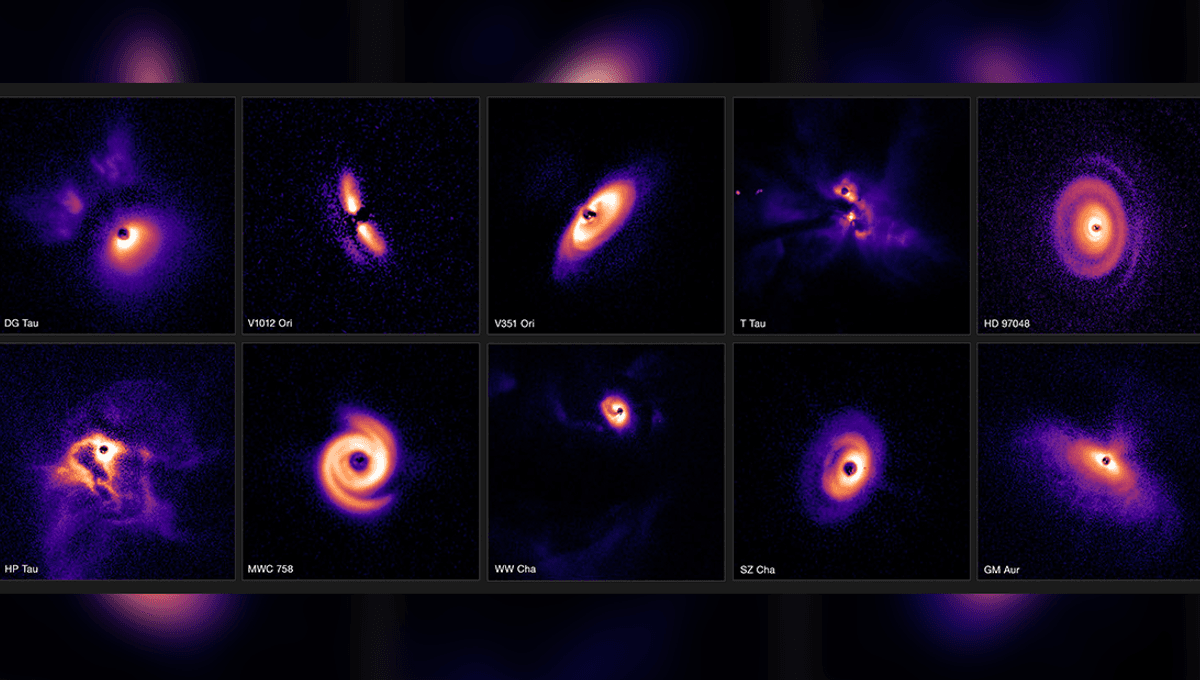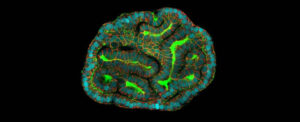There is a lot that we do not know about how planets form. We get the gist of it. A disk of material forms around a very young star. Inside it, dust becomes pebbles, and pebbles, over time, accumulate into a planet. But what are the detailed processes at work? Recent observations are providing insights and the European Southern Observatory is about to deliver a mother lode.
Thanks to their Very Large Telescope (VLT), astronomers were able to image 86 planet-forming systems in relatively nearby star-forming nebulae. The three regions are quite diverse. Two of them, Taurus and Chamaeleon I, are both around 600 light-years from Earth and have been shaped by different processes. The third one is Orion, a well-known gas-rich cloud about 1,600 light-years away and famous for being the birthplace of several stars heavier than our Sun.
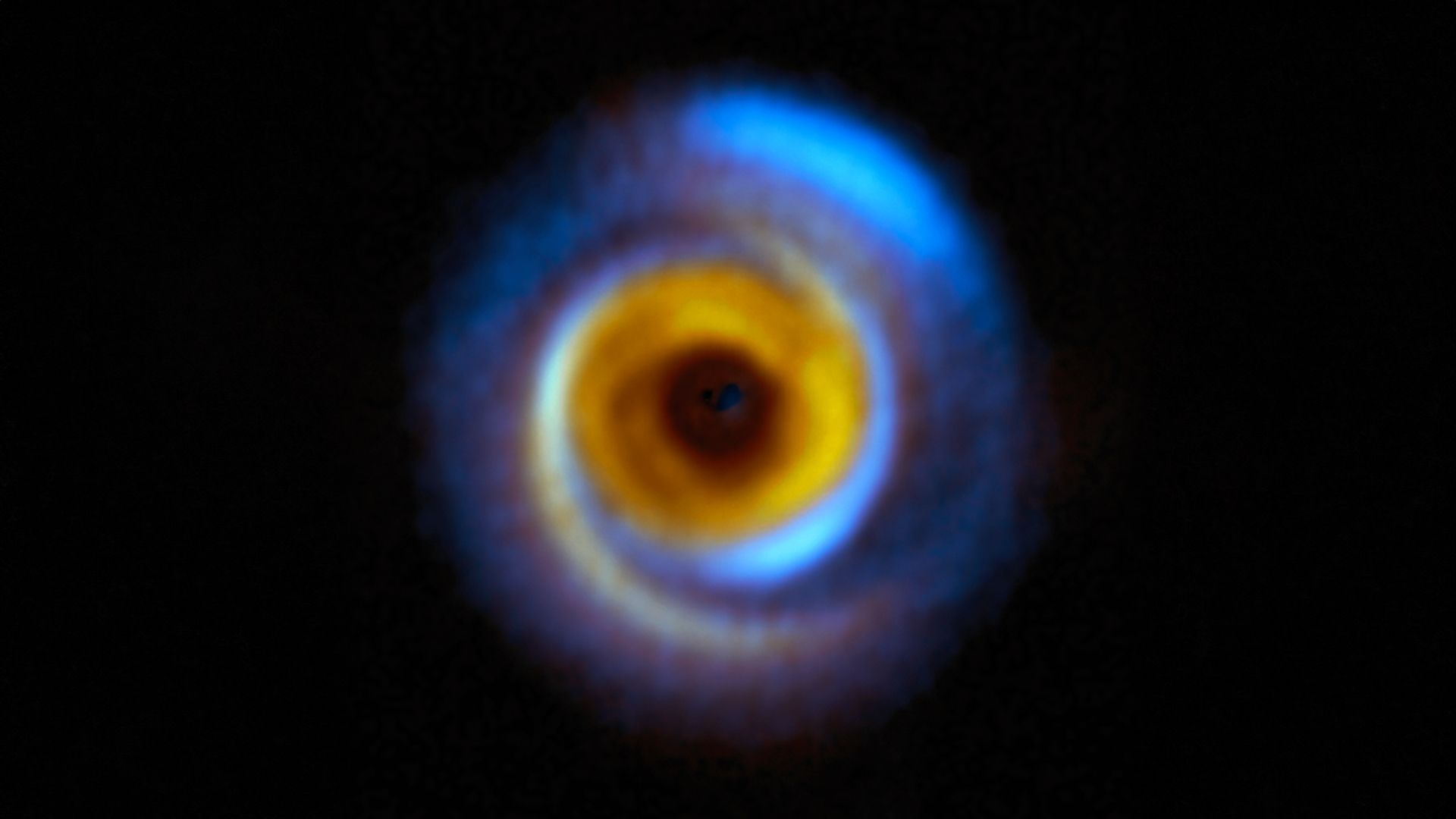
A combined view of a protoplanetary disk with the VLT contribution in yellow and the colder dust in blue, as seen from ALMA.
Image credit: ESO/A. Garufi et al.; R. Dong et al.; ALMA (ESO/NAOJ/NRAO)
This is one of the largest-ever surveys of planet-forming disks, and it puts the formation of the planets in the context of the environment into which these fledgling stars came to be just a few million years ago.
“This is really a shift in our field of study,” Christian Ginski, a lecturer at the University of Galway, Ireland, and lead author of one of three new papers published on the survey, said in a statement. “We’ve gone from the intense study of individual star systems to this huge overview of entire star-forming regions.”
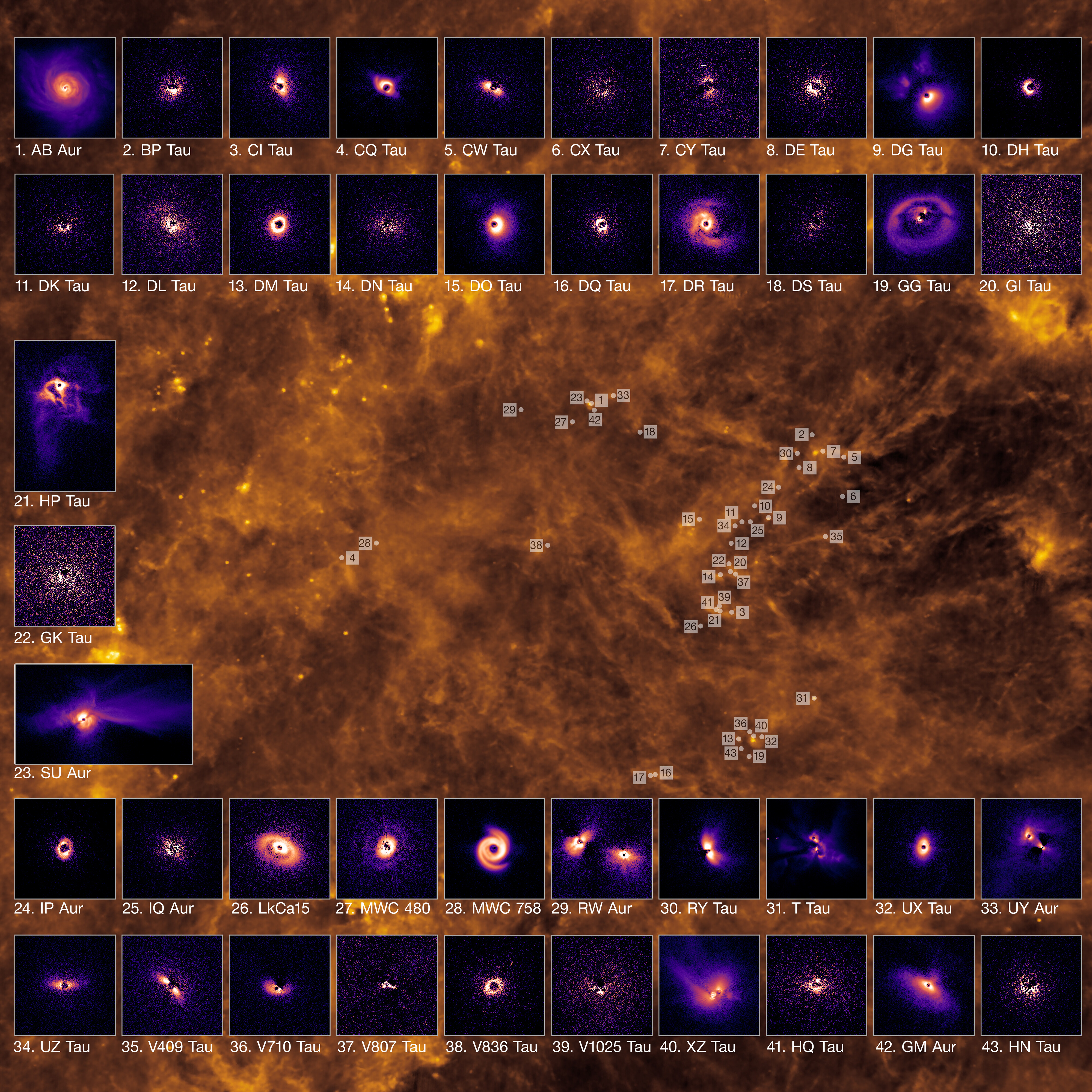
The planet-forming disks in the Taurus cloud, with the cloud and their location within it in the background.
Image credit: ESO/A.Garufi et al.; IRAS
One intriguing insight was that in Orion, binary or groups of stars had smaller protoplanetary disks and, in some of them, there was evidence of a massive planet forming, leading to the disk becoming misaligned. In general, there was enormous diversity in planet-forming disks both within regions and between them.
“Some of these discs show huge spiral arms, presumably driven by the intricate ballet of orbiting planets,” Ginski commented.
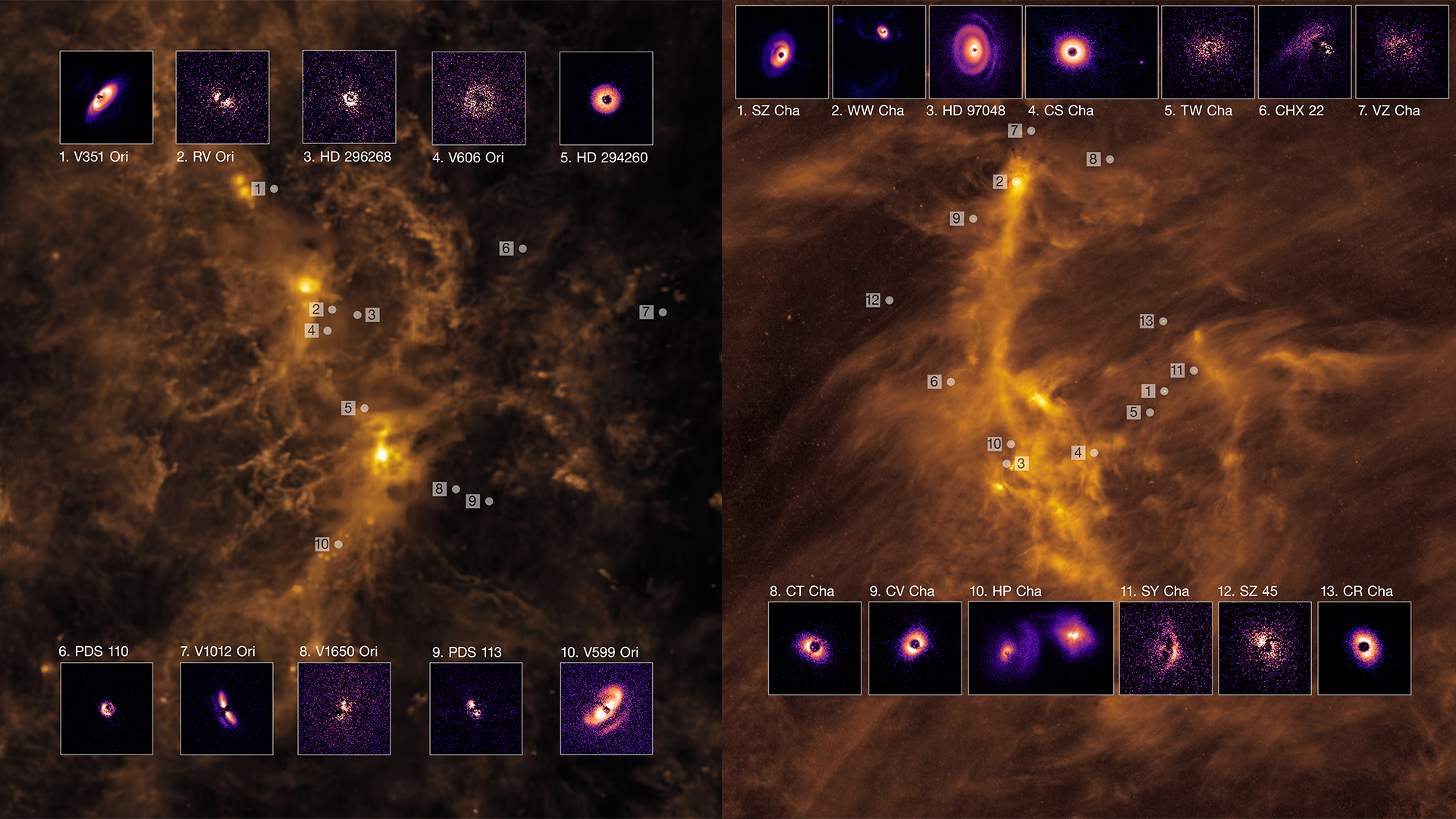
The protoplanetary disks in the Orion (left) and Chamaeleon (right) clouds.
Image credit: ESO/C. Ginski et al.; ESA/Herschel and ESO/P.-G. Valegård et al.; IRAS
“Others show rings and large cavities carved out by forming planets, while yet others seem smooth and almost dormant among all this bustle of activity,” added Antonio Garufi, an astronomer at the Arcetri Astrophysical Observatory, Italian National Institute for Astrophysics (INAF), and lead author of one of the papers.
The capabilities of the VLT were combined with observatories like the Atacama Large Millimeter/submillimeter Array (ALMA) that can see cooler dust. Together, they provide a more holistic view of the systems. From broken disks to messy spirals, there is so much to learn about these objects.
“It is almost poetic that the processes that mark the start of the journey towards forming planets and ultimately life in our own Solar System should be so beautiful,” concluded Per-Gunnar Valegård, a doctoral student at the University of Amsterdam in the Netherlands, who led the Orion study.
The study is published across three papers in the journal Astronomy & Astrophysics, each focusing on one region: Chamaeleon, Taurus, and Orion.
